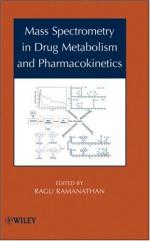|
This section contains 1,546 words (approx. 6 pages at 300 words per page) |

|
Most drugs are taken by mouth and, in order to be absorbed through the stomach and intestine, they need to be lipid-soluble. This solubility permits them to easily cross the membrane barrier. After absorption, organs with plentiful blood-flow such as the brain, liver, lungs, and kidneys are first exposed to the drug. Only highly lipid-soluble drugs can enter the brain by crossing the blood-brain barrier.
Drug concentration at the target organ is an important index for therapy and generally has an optimal range. The drug level can be raised by increasing dose, or by more frequent administration, but too high a level could cause toxicity. The drug level at the target organ can also be lowered by elimination through the urine or by metabolic steps that convert the drug to more water-soluble forms. Water-soluble metabolites are eliminated quickly in the urine. Most drugs given orally are...
|
This section contains 1,546 words (approx. 6 pages at 300 words per page) |

|


